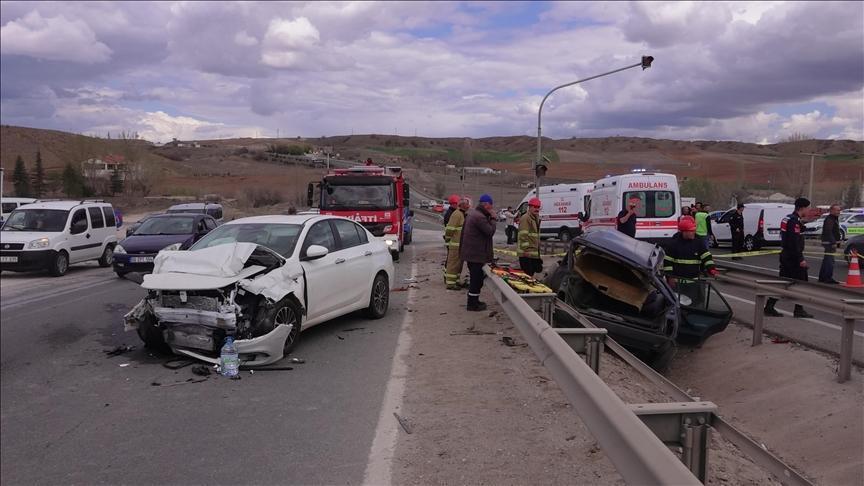Mayday May Day
Anadolu Agency yesterday filed a picture of a lonely crow in the otherwise empty newly built 1 million-person capacity Yenikapı demonstration area, which had been heralded by the Turkish government as the “legal” assembly destination for May Day rallies in Istanbul.
No trade unions, professional associations or pressure groups considered the officially designated area as suitable for Labor Day demonstrations.
Actually, after Prime Minister Tayyip Erdoğan’s strict ban on having the rally in Taksim Square in the heart of Istanbul as the traditional May Day place, the unions were divided.
For example, the centrist Türk-İş, the biggest confederation of trade unions in the country, decided to meet in Kadiköy Square on the Asian side of Istanbul, while the leftist DİSK decided to challenge the government and to try to reach Taksim despite the heavy police measures.
Following the Gezi Park wave of protests in May-June 2013, which Taksim was at the center of, Erdoğan became extremely sensitive to public protests. Despite the fact that it was Erdoğan who lifted the ban on marking May Day as “Labor Day” in 2010 and making it a national holiday, he said he would not let the demonstrators gather in the square, with bad memories from last year.
Nearly 40,000 police officers were put on duty for security measures on May Day, most of them with the particular assignment of stopping demonstrators from penetrating into Taksim Square, the Meydan. Boat shuttles across the Bosphorus, public buses and tramway routes were all restricted in order to prevent people from getting to Taksim.
And it worked. The Istanbul policed managed to stop protesters from reaching Taksim. In the afternoon hours, after a number of clashes in districts around Taksim, the police dispersed demonstrators and traffic was returned to normal by the Istanbul governor.
It is true that Erdoğan reached his target, despite criticism that he was restricting freedom of assembly.
But it is also true that trade unions, professional associations, pressure groups and, generally speaking, people, were not particularly mobilized with great enthusiasm to mark May Day in Taksim.
Not only in Taksim, but in most towns across the country the participation rate in demonstrations was not high.
The intimidation of the government might have played a role in that, but there must be other reasons too. The level of organized labor in Turkey, for example, is below international standards. Only one tenth of the labor force is organized in trade unions. The grassroots of professional organizations and pressure groups are tired of being called to the streets on every occasion.
The opposition parties are also not successful in organizing their members for mass demonstrations. In the case of May Day, a number of MPs from the main opposition Republican People’s Party (CHP) were active in trying to stop the police using extreme force on demonstrators, but that was about it.
This contradicts with the Gezi protests, in which hundreds of thousands of people managed to carry on protests across the country for three weeks. Those protests were due to the spontaneous reaction of the educated middle class, mainly as a reflex to protect their secular way of life.
The reality is that there are changes in the texture of Turkish society, and parties (perhaps with the exception of Erdoğan’s Justice and Development Party, which plays to the most basic needs), unions, and associations are unable to cope with this situation.











